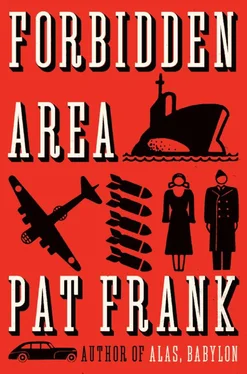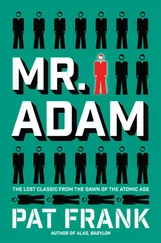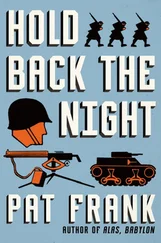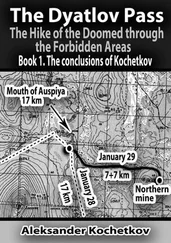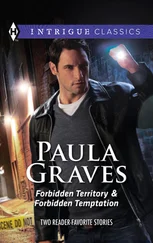All vital coastal cities and such inland centers as Pittsburgh, Cleveland, Dallas, Atlanta, Youngstown, and Bethlehem would be targets for the submarines. Katharine read:
“Because of the overriding importance of destroying the New York area—the largest financial, communications, population, and industrial complex in the world—special means can be used. In addition to submarines assigned, two seagoing tugs will put in through The Narrows a few hours before Zero. One will find a berth between Canal and 20th streets, North River. The other will dock between the Brooklyn and Williamsburg bridges. Each of these ships will carry an H-bomb, with time fuse, in its hold. Crews will be considered expendable. If the Red Navy considers this method will not in any way compromise the security of the whole plan, it can also be used on such first priority targets as Boston, Baltimore, Philadelphia, San Francisco, Los Angeles, and Norfolk.”
The forecast estimated that the attack from the sea would kill forty million Americans, of whom thirty million would die in the first six hours.
But this was by no means all. So long as SAC existed, ready to retaliate from bases ringing the Soviet Union, the Kremlin still couldn’t win. So except for two wings assigned to hit Chicago, Detroit, Milwaukee, Denver, St. Louis, Kansas City, and a few other inland centers, the whole strength of the Red Air Force was to be thrown against SAC bases the world over.
Jesse Price had made the estimate of the potentialities of Aviatsiva Dalnevo Deystviva, which he called SUSAC, the Air Force contraction for Soviet Union Strategic Air Command. Its principal weapon was the T-37, nicknamed Bison, an intercontinental bomber first displayed at the 1954 May Day celebration in Moscow. The T-37 was larger, and perhaps faster, than the B-47. It could carry the load of a B-52. But Major Price doubted that it possessed the electronic defensive gear of the B-99. He believed SUSAC had replaced all its obsolete, propeller-driven T-4’s with the T-37. Since the Russians had possessed twelve hundred T-4’s, it was safe to assume they would have at least an equal number of T-37’s.
The two wings assigned to hit Middle America would not cross the Arctic and approach the DEW line—the Distant Early Warning radar and interceptor net stretching from Alaska to Greenland—until after the strike from the sea. Thus the Air Defense Command would not be alerted until the instant of the main blow. The Air Defense Command, on which almost all hope of repelling nuclear attack now centered, was dispersed to protect the whole country. In the hours of shock and confusion following obliteration of the coastal cities, it would be called upon to defend the Midwest against concentrated attack. Price predicted that at least ten enemy bombers would get through. Ten bombers delivered to the proper targets would paralyze and poison the solar plexus of the nation.
Simmons, at the end of the long table, head bent, was touching a pencil to his pad, arranging his thoughts, as he had been taught, into a precise parade. He saw that the others waited for him to speak. “You’ve all read the forecast in this form, which I hope will be final,” he said. “Do you have any reservations?”
Commander Batt rose. Most of the others remained in their seats while talking, but Batt was accustomed to thinking, and speaking, on his feet. Since boyhood, Batt had been questioned on serious subjects by admirals, and when you spoke to an admiral you stood up, respectfully. Batt, a taut, neatly made man, was third generation Navy. His boyhood heroes had been Farragut and John Paul Jones and Decatur instead of Dick Tracy or Tom Swift. He had absorbed Mahan while still at Macdonough School and graduated from the Academy in 41, close to the top of his class. He finished flight training just too late for Midway, but in plenty of time for Santa Cruz and a dozen battles that followed. By the end of the war he had reached a conclusion, not novel but still unacceptable to most of his superiors, that the air was the dominant ocean. It was an ocean without bounds or shoals and Mahan’s theories could apply to the sky. Yet he remained all Navy, and he always tried to fit the Navy into the ever-shifting picture of a future war. He had been one of the first to advocate the use of carriers as mobile bases for strategic air war, had written an essay on the subject for the United States Naval Institute Proceedings, and had seen his arguments adopted by his seniors. “I don’t want you to mistake me,” he began. “I like our plan, and yet—”
Jesse Price grinned. “Still worried about how to get your subs across?”
“No. It’s not that. At first I was skeptical about moving fifty to seventy-five submarines across the North Atlantic without their being spotted. But I kept thinking of Pearl Harbor and how the Japs got six carriers and a supporting fleet to within two hundred miles of Oahu with no sweat. And I thought of how much bigger a carrier is than a snorkel and periscope. So, as you can see in the plan, I staged most of the subs in the White Sea and at Murmansk. They slip through the Denmark Straits and come down from the north, keeping out of shipping lanes. If they started in mid-winter, say about now, when the weather was bad and trans-Atlantic traffic at a minimum, there wouldn’t be much chance of detection. A smaller flotilla sneaks out of the Baltic. They’ll be the ones bound for our Gulf coast. All of them can do most of their cruising on the surface, keep their radar going, and duck long before anything can see them. Even if one of two were spotted on our side of the ocean it would hardly be a casus belli.”
“Matter of fact,” said Major Price, “it’s happened a few times already without anybody pushing the panic button. And we’ve had a lot of snooper planes over Greenland and Alaska. More than normal. Maybe testing our radar net. Maybe just letting us get used to them.”
“Right,” said Batt. “Anyway, these subs don’t have to enter our territorial waters until their final run in for their targets. At dusk they can be two hundred miles offshore, and two hundred feet down, and at first light, D-Day, be in firing position without ever having shown themselves.”
“Machiavelli, junior,” Katharine said.
“However,” Batt continued, smiling, “I still have some reservations about whether they can nail the Forrestal and our other big carriers. I’m afraid they won’t have much trouble knocking out the Sixth Fleet, in the Med. They have agents strung all the way from Gib to Stamboul, so they know the approximate location of Sixth Fleet carriers almost from day to day. The Mediterranean, after all, is narrow waters. Dangerous. But a task force in the Atlantic is an entirely different matter. Its location can be shifted six hundred miles every twenty-four hours.”
Simmons said, “Assuming that the Forrestal and two or three other big carriers were loose on the high seas, would that alone deter the Russians?”
“A carrier bomber can tote the same bomb as the B-Nine-Nine,” Batt said. “But they don’t have the range. Carrier planes can’t get to their heartland. Nor do they have the altitude and defensive equipment of the Ninety-Nine. They are intended to complement SAC, not replace it.”
“Haven’t you answered your own question?”
“I guess I have,” Commander Batt admitted, and sat down.
“Anyone else?” asked Simmons.
Jesse Price arranged his pipes in a row and said, “Me. Understand, I like this plan. It is feasible and practical and well within the Russian capabilities. It has unexpected elements of strength, such as leaving the major concentrations of our fighter and anti-aircraft defense strictly alone, immobilized while the blitz is going on. But the plan doesn’t contemplate the destruction of all of SAC. Our bases in England—and I’ll include the RAF strategic bombing bases along with ours—are in range of the Russian fighter-bombers and probably of the Baltic rocket sites. Scratch our British bases. I think we can also scratch our island bases in the Pacific. They’re sitting ducks for submarine-launched missiles. Maybe SUSAC will have trouble knocking out our fields in North Africa and Turkey, but I doubt it. The only thing that stumps me are the bases in our southern and southwest states. They’re just about as far as you can get from the U.S.S.R. Missiles from submarines may kill the ones close to big cities, but the enemy can’t hope to get them all. If only a few survive, the Russians win but they lose.”
Читать дальше
